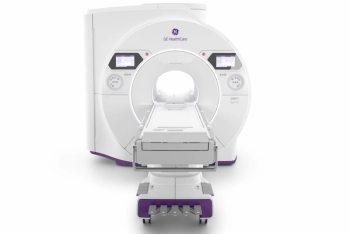
The combination of high-performance gradient technology and AI tools with the Signa Sprint MRI reportedly facilitate enhanced MRI workflow efficiencies in cardiac and oncology imaging.

The combination of high-performance gradient technology and AI tools with the Signa Sprint MRI reportedly facilitate enhanced MRI workflow efficiencies in cardiac and oncology imaging.

For neuroradiologists, the Signa Magnus 3T MRI system may offer enhanced visualization of the brain microstructure, microvasculature, and function.
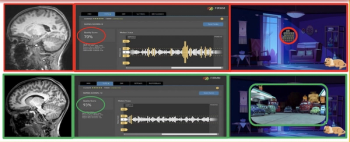
FIRMM-pix, a brain magnetic resonance imaging (MRI) software module recently launched at the International Society for Magnetic Resonance in Medicine (ISMRM) conference, reportedly employs visual biofeedback and gamification that coaches patients to stay still during brain MRI exams.
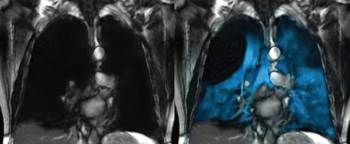
The combination of Philips’ MR 7700 multi-nuclei scanner with the FDA-approved Xenoview hyperpolarized Xenon magnetic resonance imaging (MRI) contrast agent may facilitate earlier diagnosis and intervention for patients with obstructive lung diseases.

Abbreviated MRI protocols can detect and diagnose breast cancer as well as full-protocol MRI.
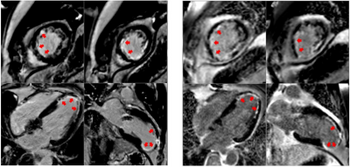
Performance of 0.55T MRI is comparable to 1.5T MRI in acquiring and interpreting late gadolinium enhancement in patients suspected of myocardial infarction, research shows.
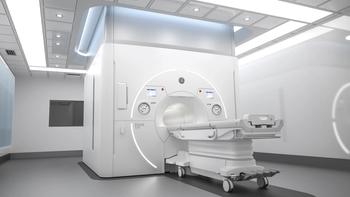
Products focus on Alzheimer’s disease, traumatic brain injury, and accelerating clinical translation.


Diagnostic power and field strength go hand in hand when it comes to evaluating multiple sclerosis.

Studies described during a scientific session at the ISMRM on Wednesday showed that diagnostic power and field strength go hand in hand when it comes to evaluating multiple sclerosis.

New MR spectroscopy findings indicate that changes in brain glutamate levels reflect changes in heroin craving among addicts during methadone maintenance therapy. MRS may eventually help predict if addicts will relapse after treatment.

A clinical trial presented Monday demonstrated how complicated the quantification of dynamic contrast-enhanced MRI of suspected prostate cancer can be.

Radiologists can anticipate access to more web-based educational programming from the International Society for Magnetic Resonance in Medicine and a more intense international flavor in the society’s future work.

Medrad unveiled an educational program at the ISMRM meeting designed to teach the operators of GE Signa scanners how to perform prostate MR with its eCoil Endorectal Coil.

Siemens Healthcare is focusing on its 3T Verio and 1.5T Essenza at the ISMRM meeting. Both were unveiled last year at the RSNA meeting.

Visitors to the 2008 International Society for Magnetic Resonance in Medicine meeting in Toronto need only wait a minute for the door to swing from clinical issues to advanced research on functional and metabolic imaging.

Sophisticated pulse sequence developments and practical applications for diffusion imaging dominated the work of finalists selected for the ISMRM’s 2008 Young Investigator Awards.

More is better and all but inevitable in medical imaging. In CT, more means slices. In MR, it’s channels for receiving radiofrequency signals. These currently number 32 on the most advanced commercially available systems. But a replacement for that benchmark is in the works.

Before the dawn of political correctness, there was a time when girls were made of sugar and spice and everything nice, and boys were made of snips and snails and puppy dog tails. Now, functional MRI is confirming that boys and girls really don't think alike. Brain structures and functions that facilitate intelligence in girls are different for boys.

Whole-body diffusion-weighted MRI has been introduced to complement and possibly compete against whole-body FDG PET and whole-body anatomical MRI for staging cancer metastasis.

Playing off the continuously moving table built into TimCT, Siemens Medical Solutions proclaimed “Tim (Siemens’ total image matrix) is on the move” at the International Society for Magnetic Resonance in Medicine meeting in Berlin. The company is featuring clinical results from its seven luminary installations of the technology in MR angiography and central nervous system imaging.

Volumetric and highly specialized imaging techniques will expand the clinical horizons of MR, according to GE Healthcare. Technologies that improve the speed of data acquisition and processing will make them practical.

Toshiba Medical Systems Europe is going toe-to-toe with the established high-end vendors at 1.5T during the International Society for Magnetic Resonance in Medicine meeting in Berlin. Its high-performance Vantage Atlas MR, shown several months earlier at the RSNA meeting as a work-in-progress, became a commercial reality with the first system installed and operating in March at a hospital in a Paris suburb and another more recently at an outpatient facility in Las Vegas.

An Emory University researcher has established the diagnostic power of a simple contrast-enhanced MRI protocol that informs surgeons about the presence and extent of hepatocellular cancer in cirrhotic livers that are scheduled for transplantation.

Unlike tests that provide thresholds such as good or bad cholesterol levels, MR scans are open to interpretation. Early steps toward quantitation have focused on measuring tumor size and volume as indicators of cancer progression or patient response to therapy. Philips is going further.

The differing interests of clinical and basic science researchers are apparent in the work of the finalists for Young Investigator Awards at this year’s ISMRM/ESMRMB meeting.